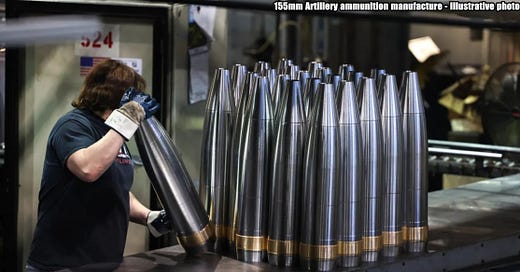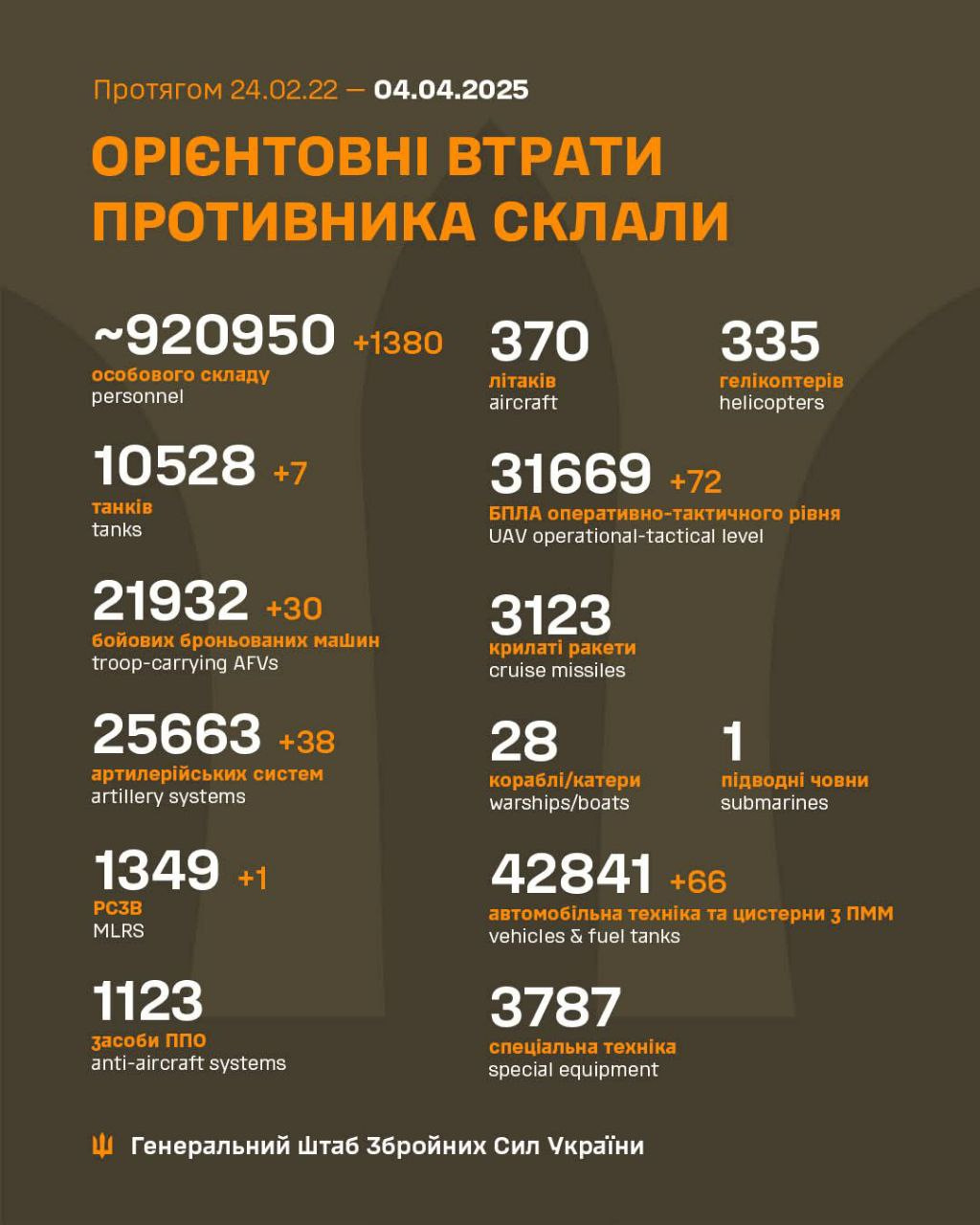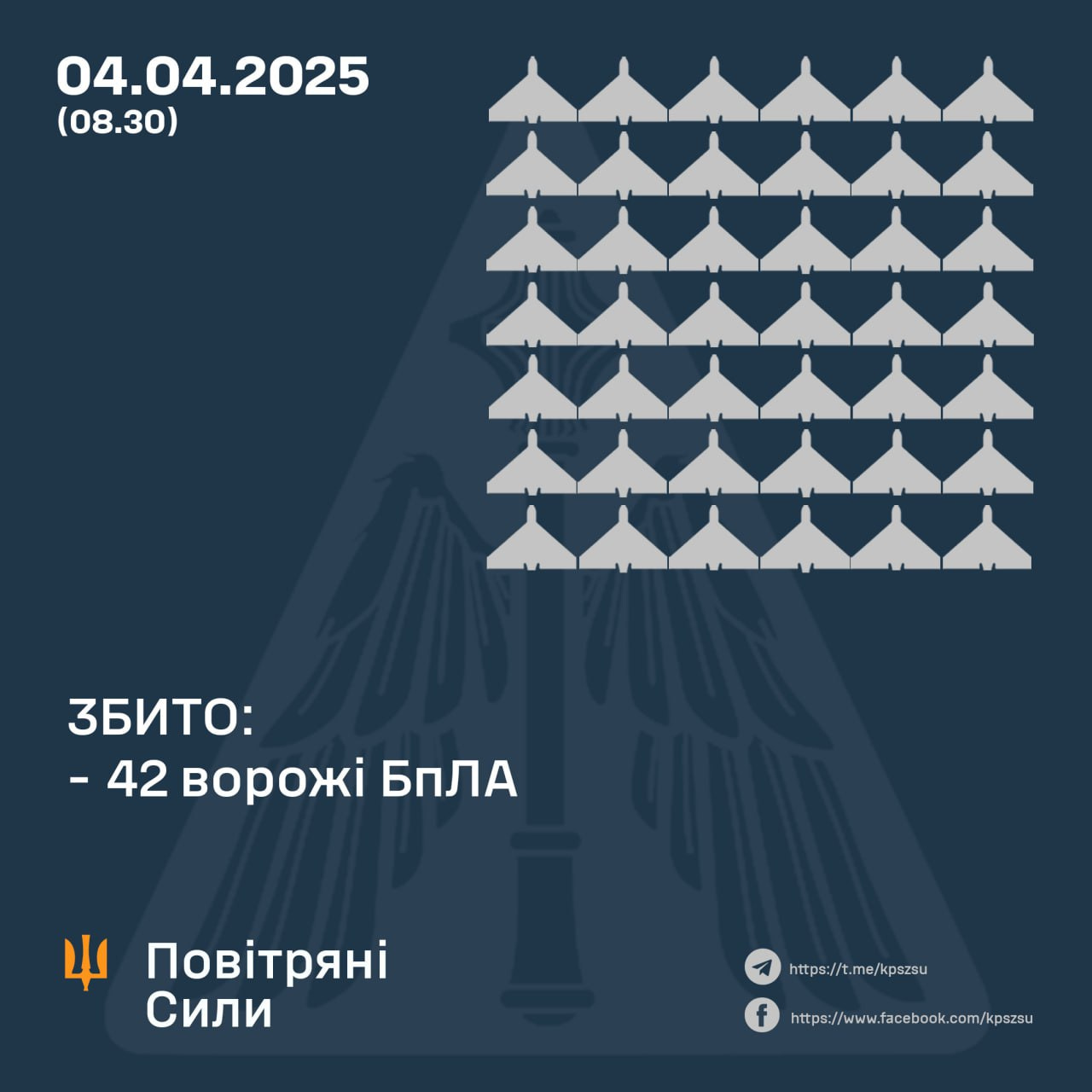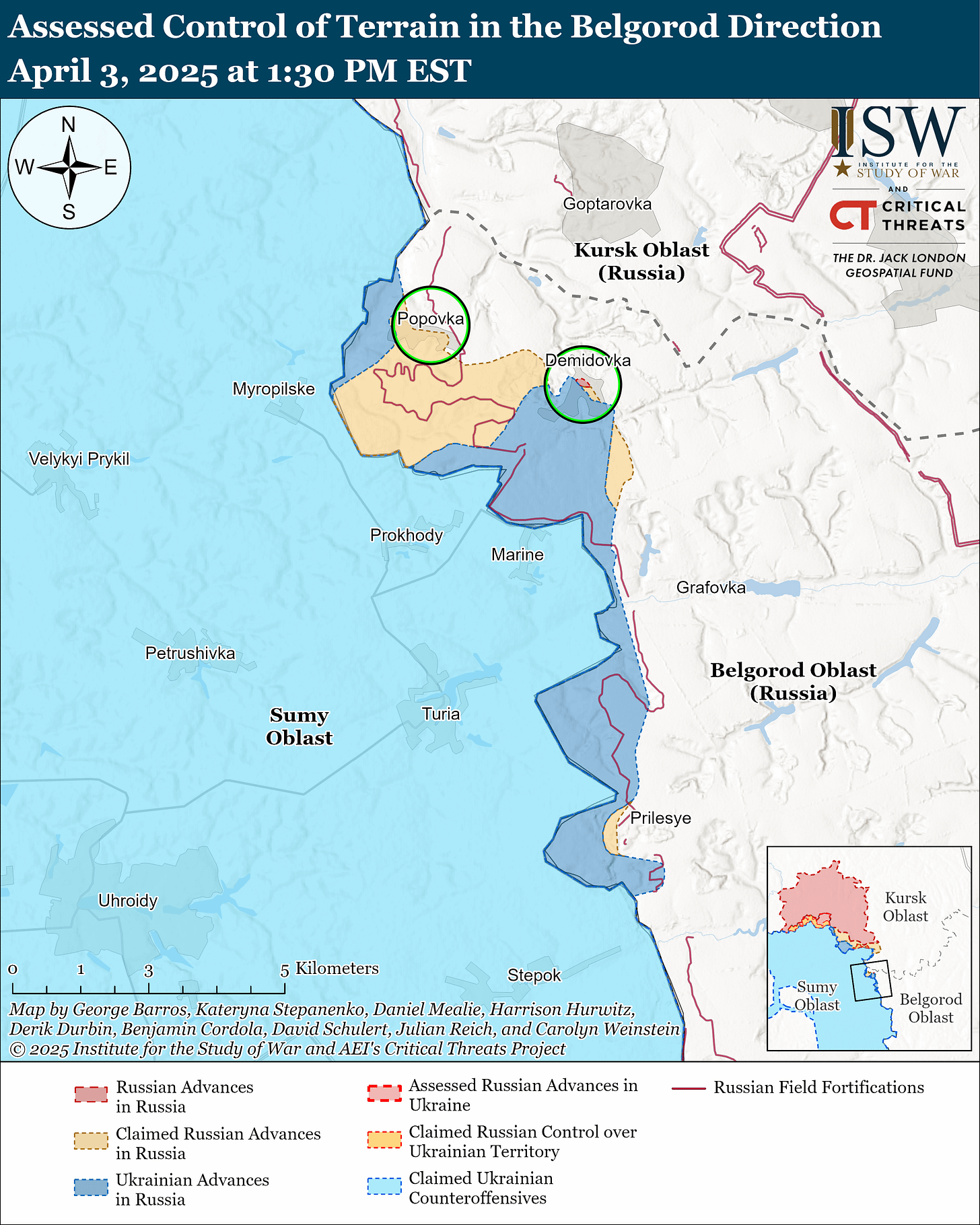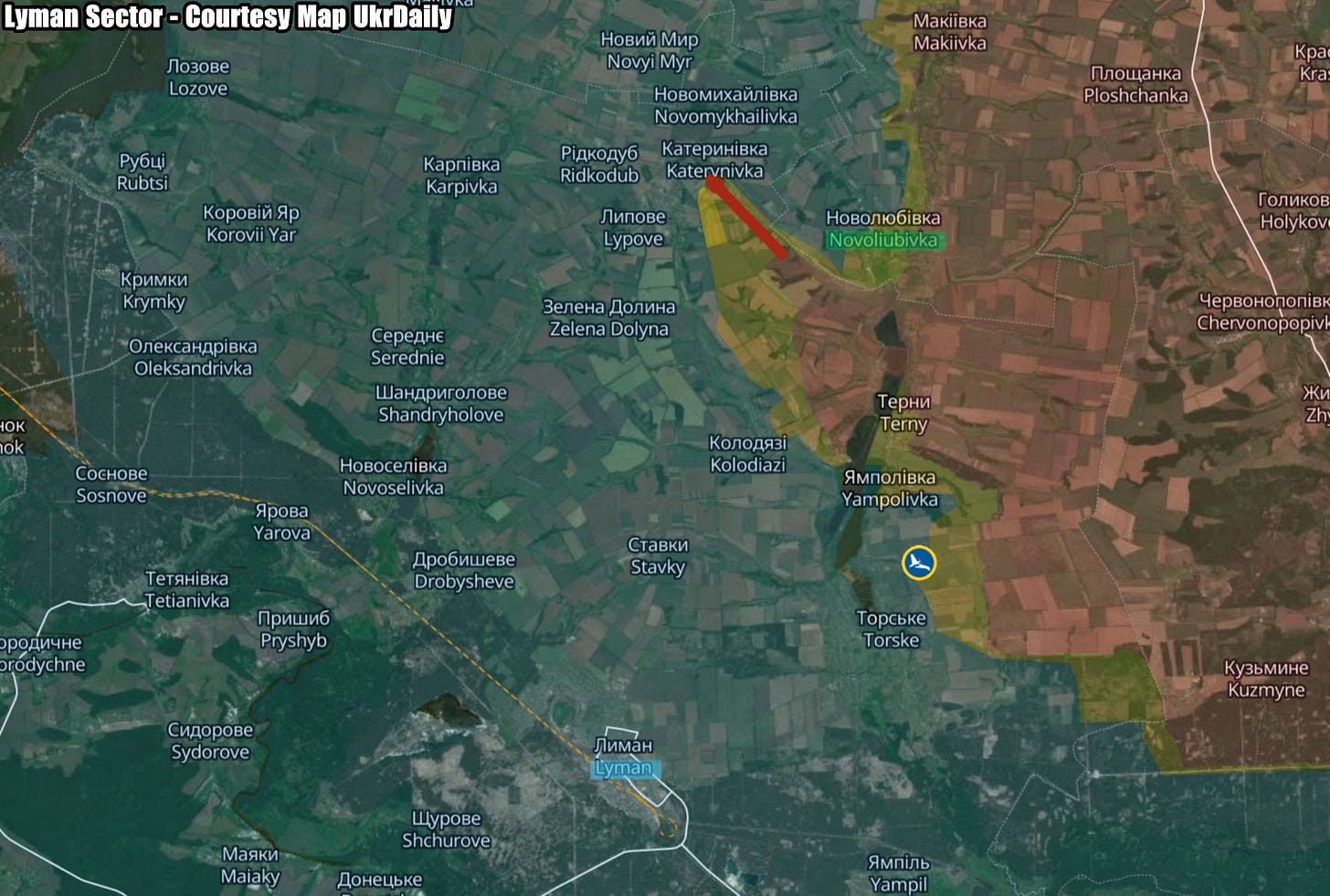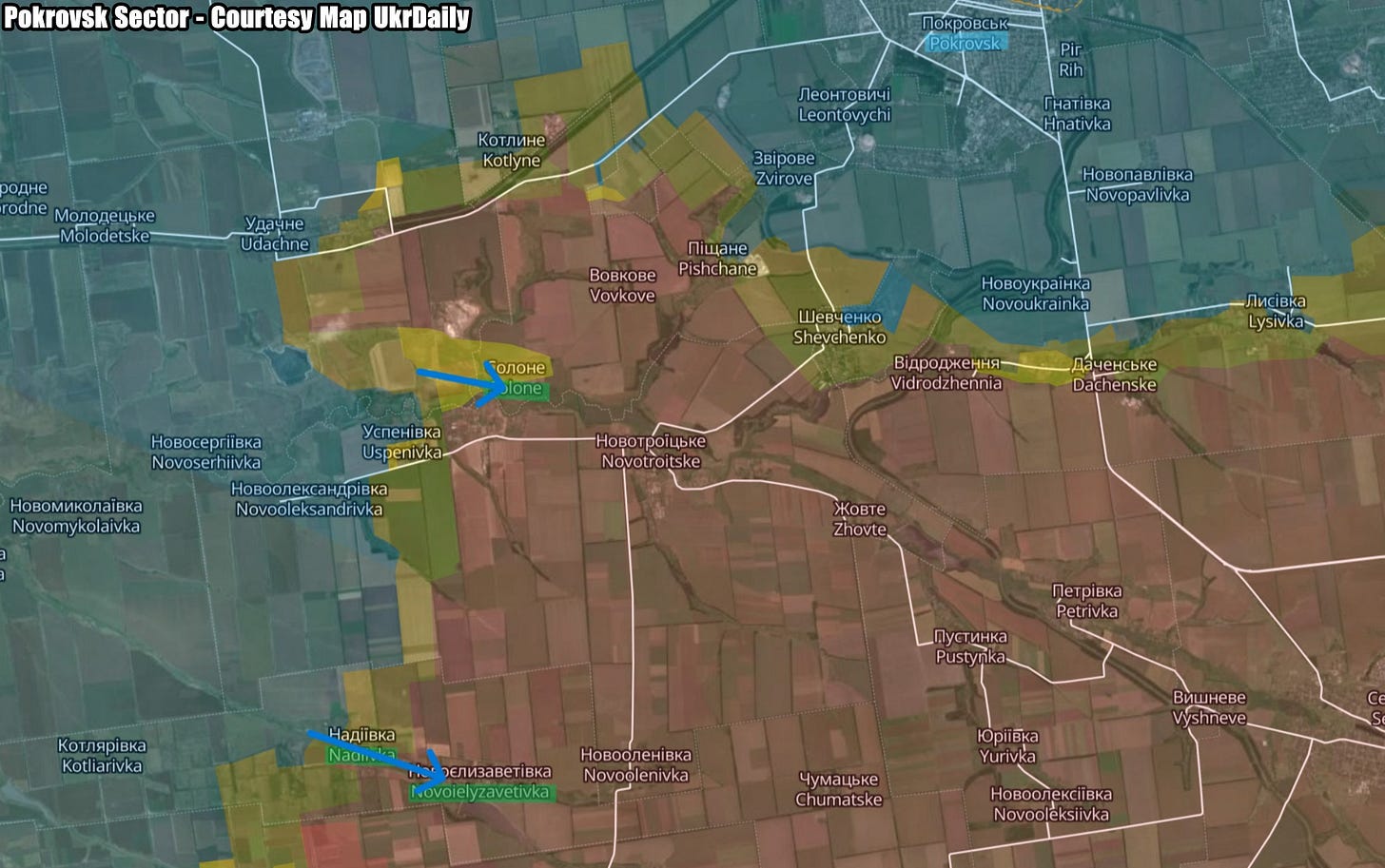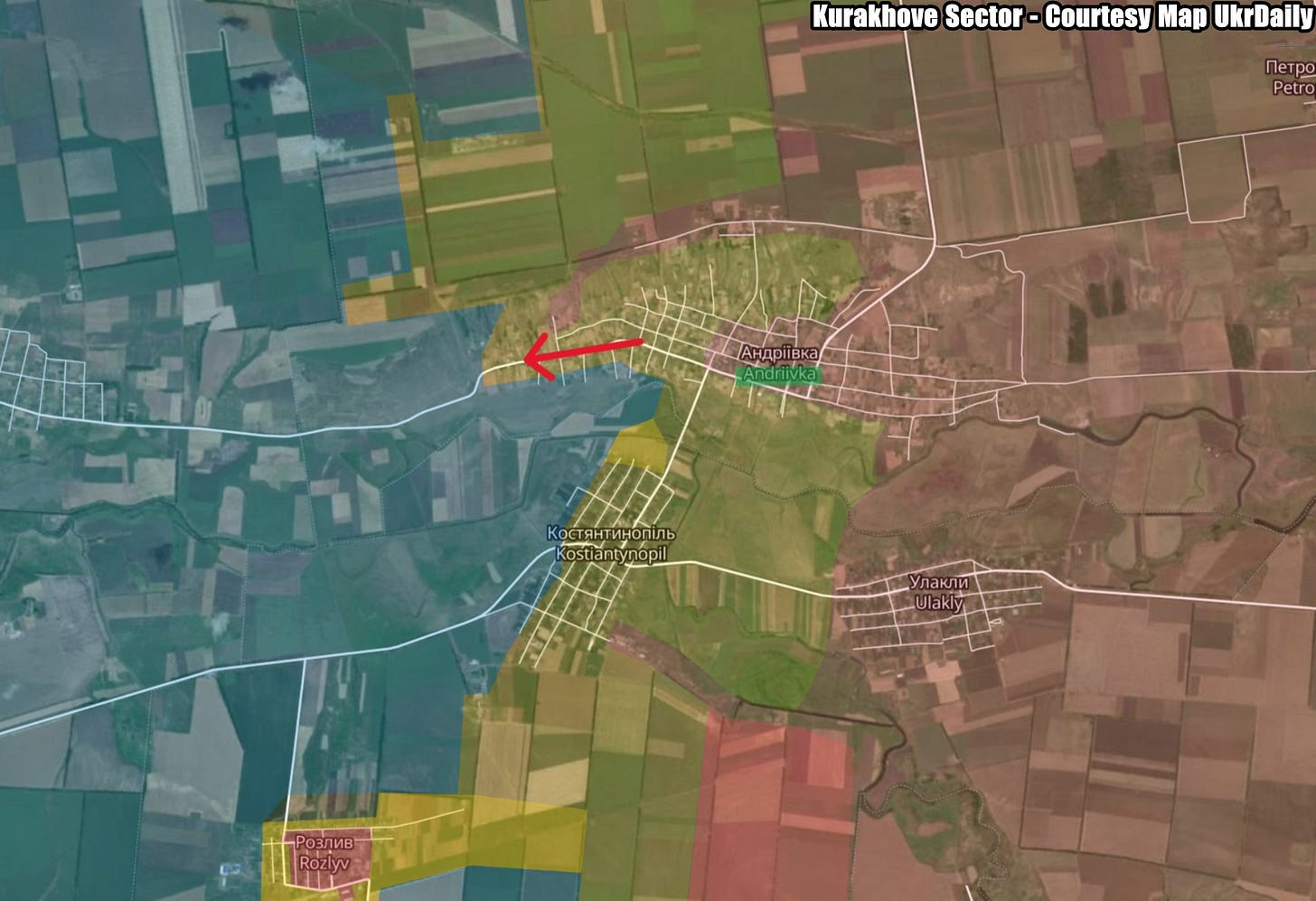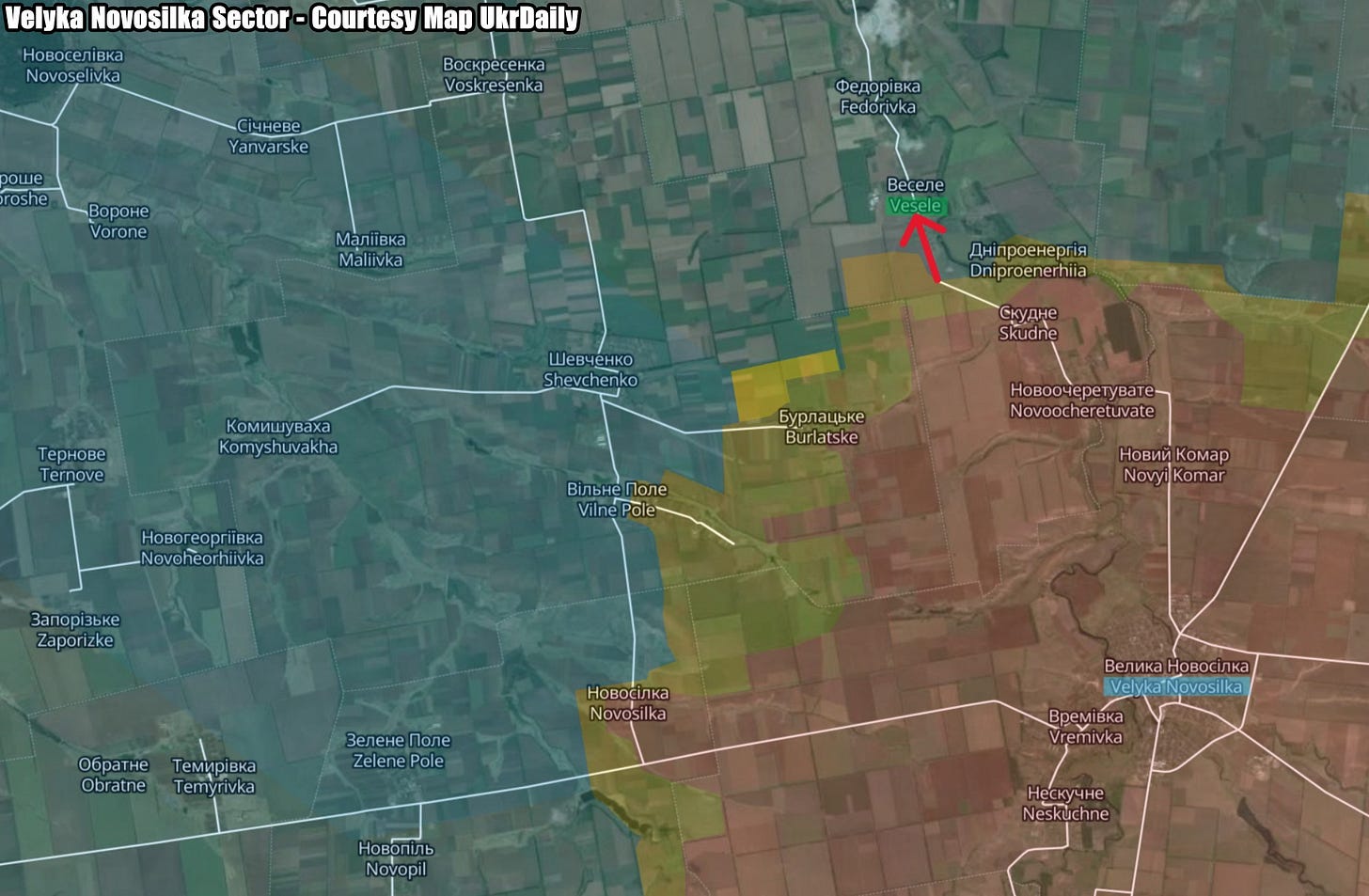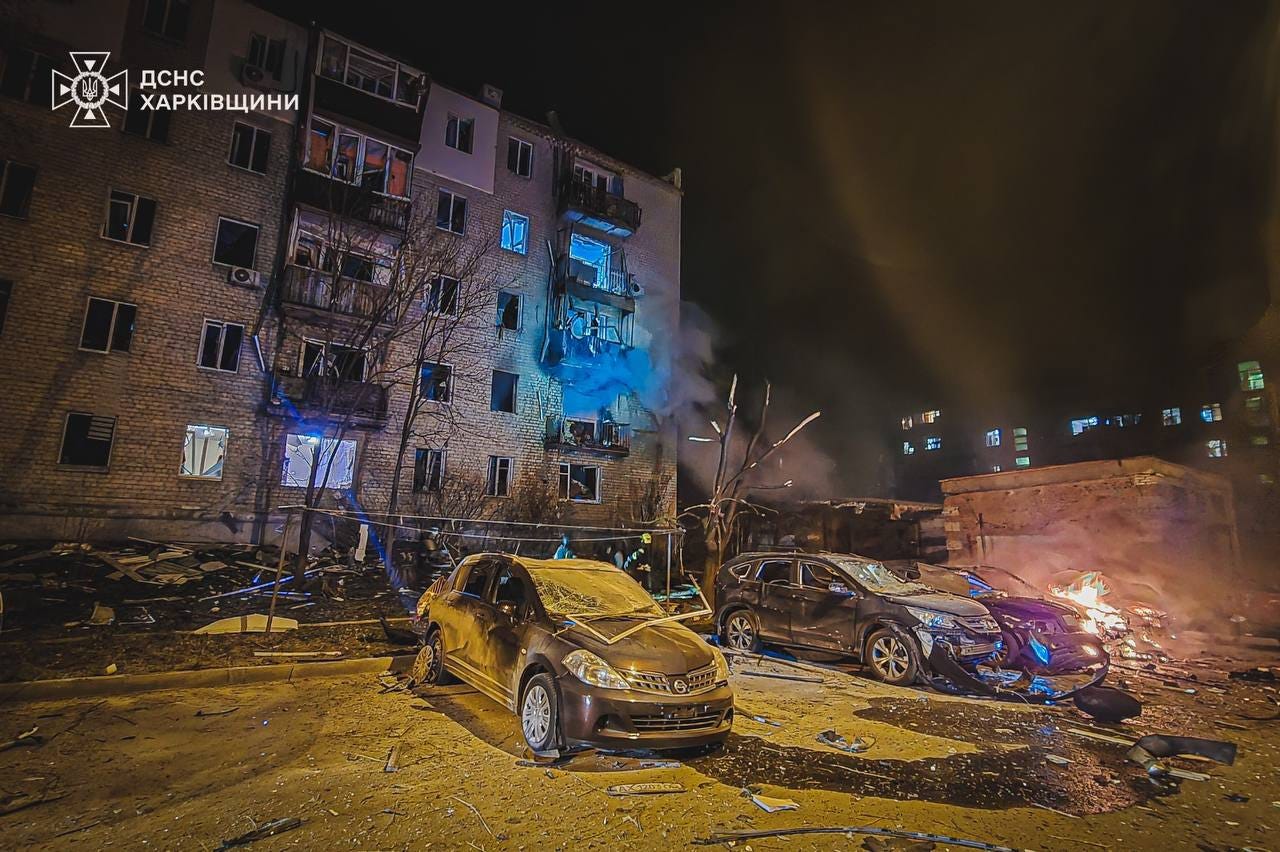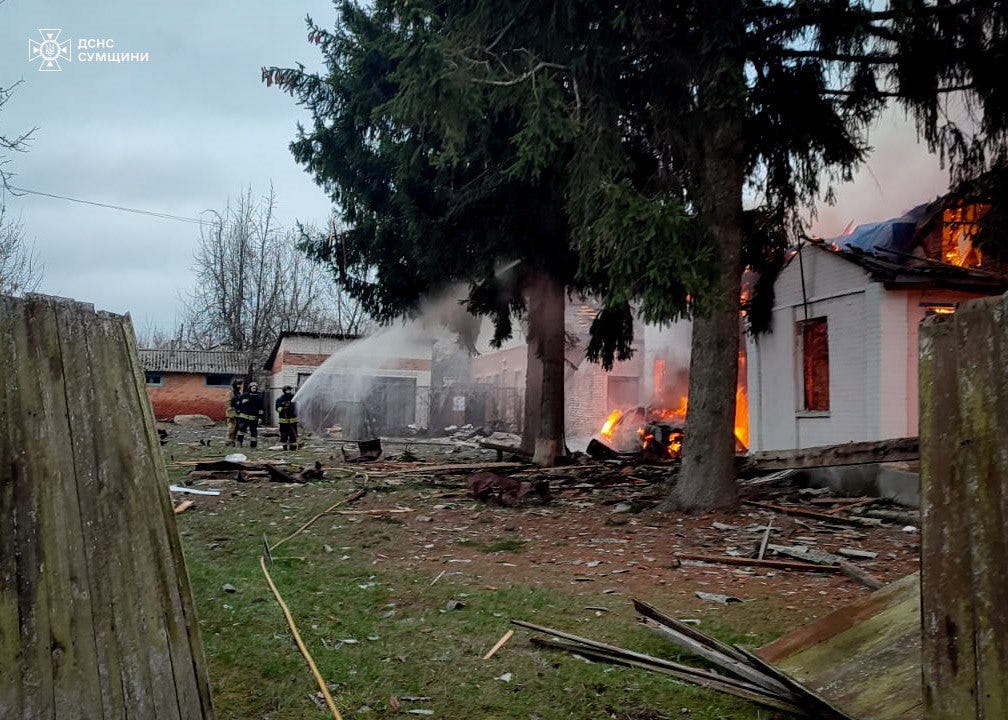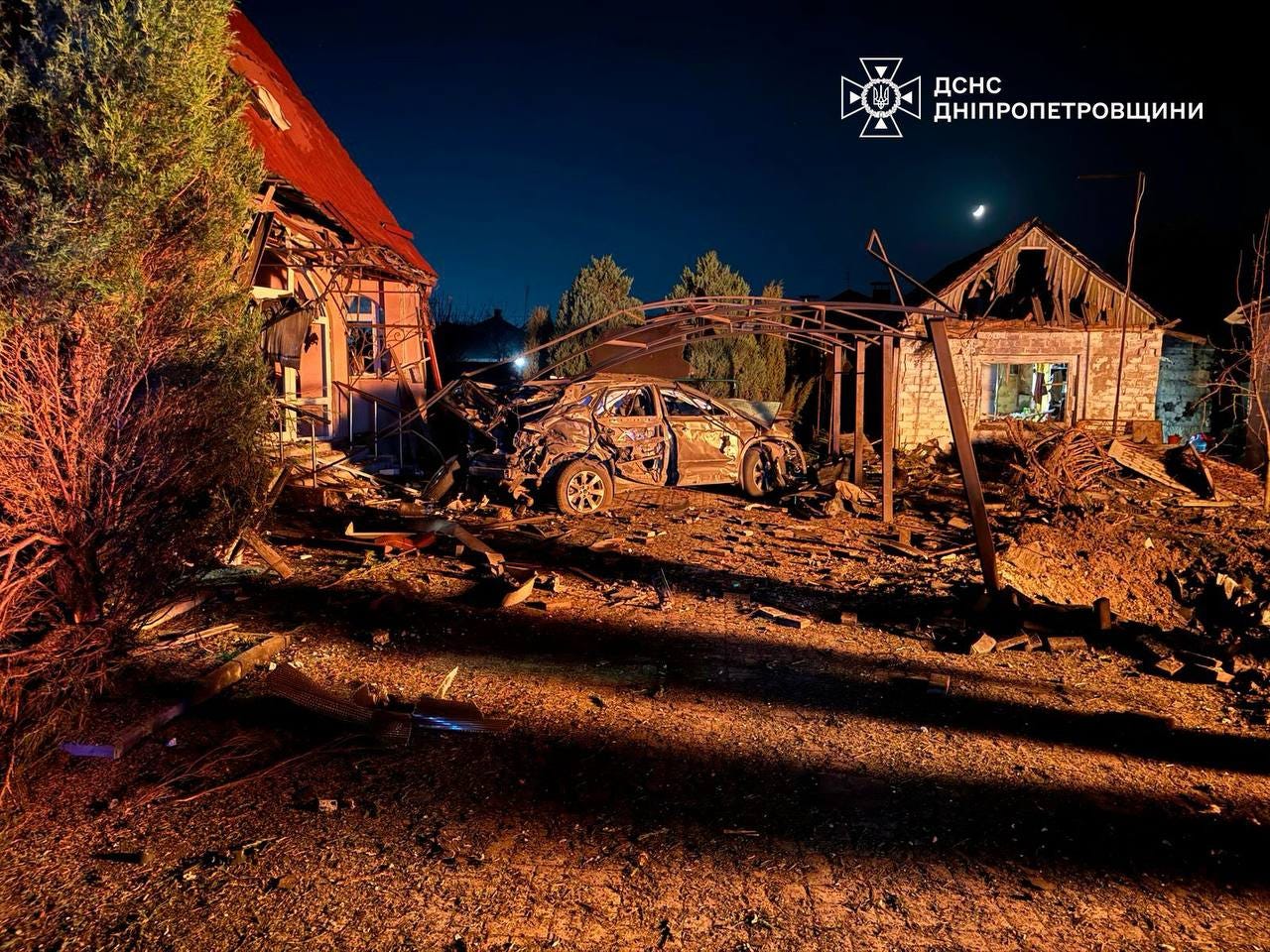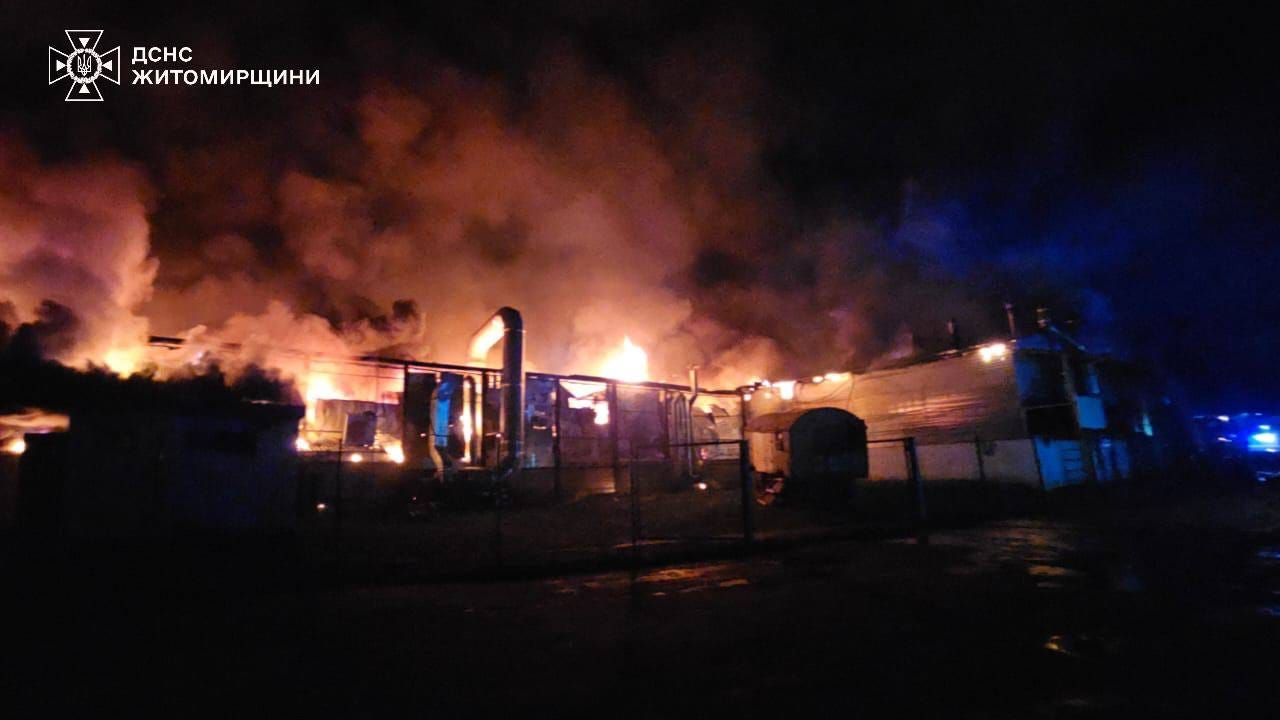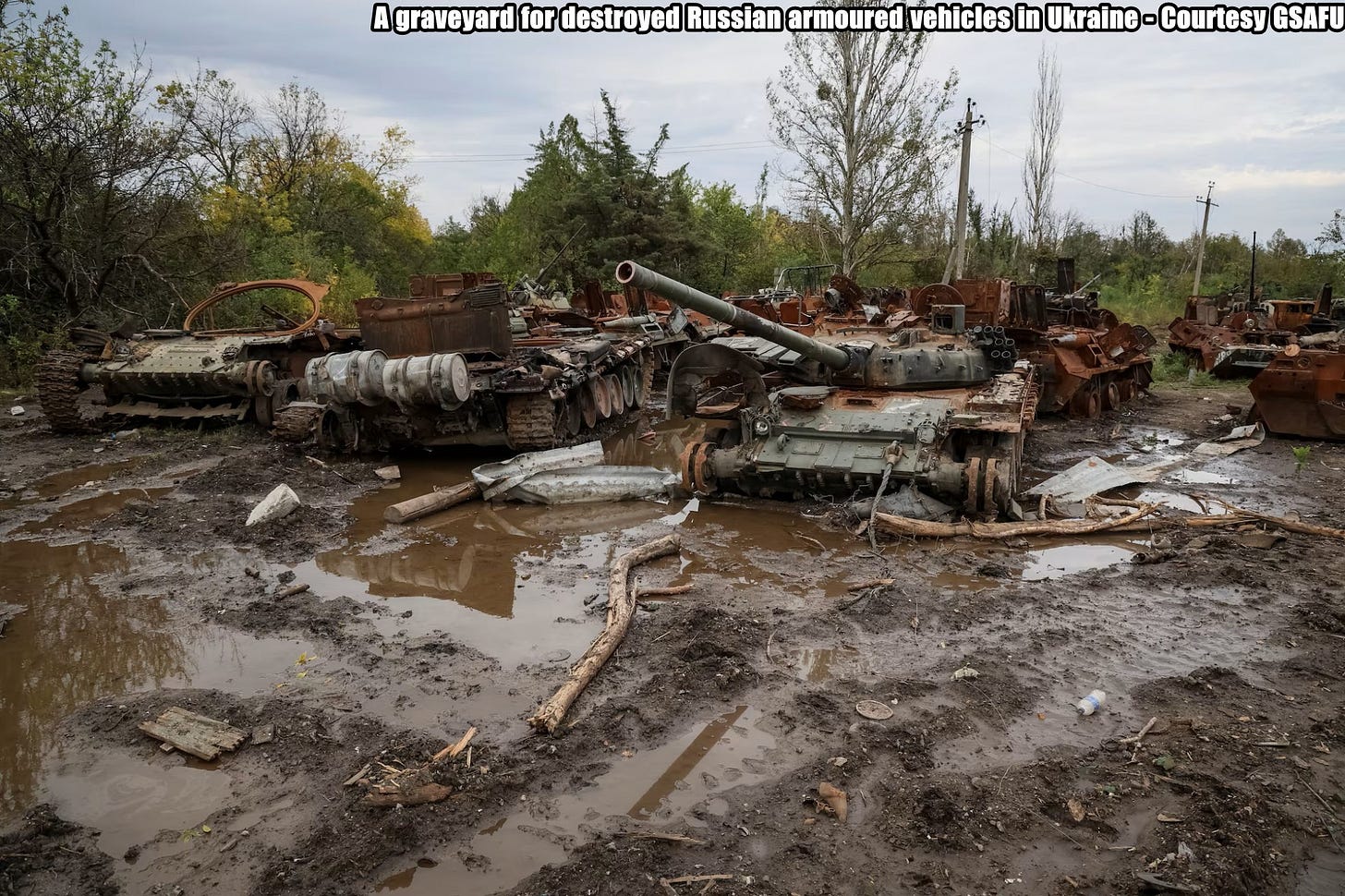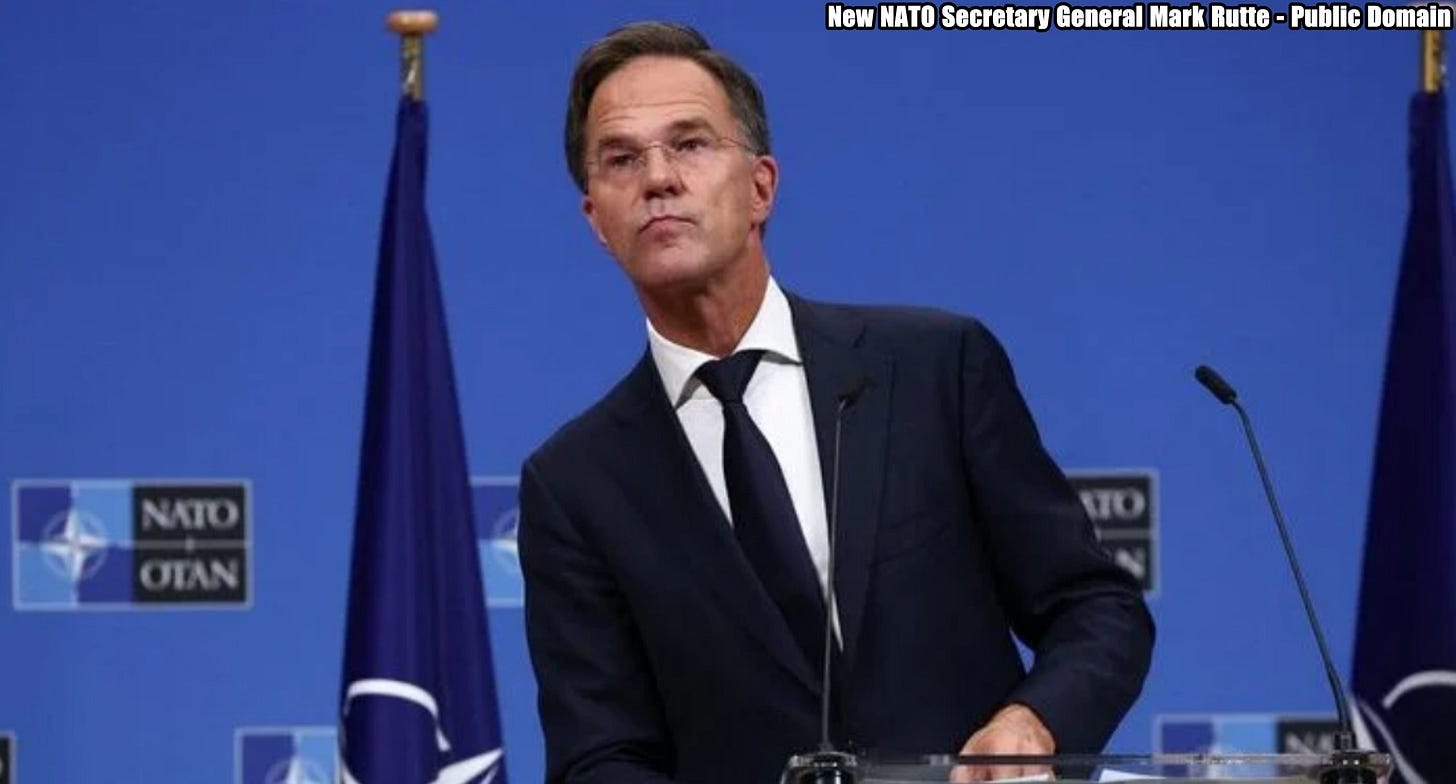Slava Ukraini! In early 2022 I began a Telegram channel aggregating news from a number of sources daily on the war in Ukraine. In June 2023 I began providing a daily draft for the Ukraine War Brief Podcast collecting news from over 70 sources daily, which formed the basis of the script. While the Podcast no longer exists I have continued to make this Brief available for my followers here on Substack for those who wish to keep up with the news from the war.
All the latest news on the Russo-Ukraine War 6 days per week
ALONG THE CONTACT LINE
GSAFU Morning Report
For: Apr 04,2025
The General Staff of the Armed Forces of Ukraine in its Operational Information update at 08:00 on Apr 4 stated that day 1136 of the full-scale invasion of the Russian Federation against Ukraine had begun.
The situation on the line of combat remains tense in some sectors. Ukrainian defenders continue to actively counteract the Russian aggressor, causing them significant losses in personnel, equipment and technology. Exhausting the enemy along the entire front line and continuing to disrupt the plans of Russian occupiers to advance deeper into the territory of Ukraine.
During the past day, 156 combat engagements took place.
Over the past 24 hours, the enemy carried out 1 missile strike, 104 air strikes, used 2,203 drones and fired approximately 5,600 artillery shells across the positions of Ukrainian forces and civilians.
Air Force Daily Report
42 ENEMY UAVS SHOT DOWN, 22 SIMULATOR UAVS FAILED TO REACH THEIR TARGETS (LOCATIONALLY LOST)
➖➖➖➖➖➖➖➖➖
On the night of April 4, 2025 (from 9:30 p.m. on April 3), the enemy attacked with 78 Shahed-type strike UAVs and simulator drones of various types from the directions: Bryansk, Millerovo, Primorsko-Akhtarsk, Kursk - Russia.
The air attack was repelled by anti-aircraft missile troops, electronic warfare units, and mobile fire groups of the Defense Forces of Ukraine.
As of 08:30, it has been confirmed that 42 Shahed attack UAVs (and other types of drones) have been shot down in the north, east, and center of the country.
22 enemy drone simulators — lost in location (without negative consequences).
The Kharkiv, Dnipropetrovsk, Kyiv, and Zaporizhia regions were affected by the Russian attack.
Combat Operations in the Russian Federation
The Institute for the Study of War (ISW), a US based think tank, in its Apr 3 Russian Offensive Campaign Assessment reported that:
Kursk Salient: Russian forces recently advanced along the Sumy-Kursk Oblast border.
Geolocated footage published on Apr 3 indicates that Russian forces recently advanced in northern Guyevo, Kursk Oblast (south of Sudzha).
Belgorod Incursion: Russian forces continued offensive operations in northwestern Belgorod Oblast on Apr 3 but did not advance.
Russian milbloggers claimed that fighting continued northwest of Belgorod City near Demidovka and Popovka.
The Khortytsia operational-strategic group
(Responsible for the northeastern part of Ukraine. )
Lyman Sector: Russian forces recently advanced in the Lyman direction.
Geolocated footage published on Apr 3 indicates that Russian forces recently advanced northwest of Novolyubivka (northeast of Lyman).
Toretsk Sector: Russian forces recently advanced in the Toretsk direction.
Geolocated footage published on Apr 2 indicates that Russian forces advanced on Mykhaila Hrushevskoho Street in central Toretsk, but this advance is not recent and likely happened in mid-March based on weather conditions visible in the footage
The Tavria operational-strategic group
(Responsible for the central-eastern and southeastern part of Ukraine.)
Pokrovsk Sector : Ukrainian forces recently advanced in the Pokrovsk direction.
Assessed Ukrainian advances: Geolocated footage published on Apr 2 indicates that Ukrainian forces recently advanced along Lenina Street in western Novoyelyzavetivka (southwest of Pokrovsk) and seized Nadiivka (west of Novoyelyazvetivka).
Russian milbloggers claimed that Ukrainian forces advanced into the western outskirts of Solone (southwest of Pokrovsk).
Kurakhove Sector: Russian forces recently advanced in the Kurakhove direction during a reinforced company-sized mechanized assault.
Geolocated footage published on Apr 3 indicates that Russian forces recently advanced west along the T-0428 Andriivka-Novopavlivka highway west of Andriivka (west of Kurakhove) during a reinforced company-sized mechanized assault.
The Ukrainian General Staff reported that Ukrainian forces struck 12 Russian vehicles and completely destroyed seven vehicles involved in the assault.
Velyka Novosilka Sector: Russian forces recently advanced in the Velyka Novosilka direction.
Geolocated footage published on April 3 indicates that Russian forces advanced to the southwestern outskirts of Vesele (northwest of Velyka Novosilka).
The Odesa operational-strategic group
(Responsible for Kherson, Qırım, (also known as Crimea) and the Black Sea.)
There have been no major changes to the combat environment since our last report.
TEMPORARILY OCCUPIED TERRITORIES
Nothing major to report.
THE HOME FRONT
Russian attacks across Ukraine kill 6, injure 46 over the past day.
Russian attacks against Ukraine killed at least six civilians and injured at least 46 others over the past day, the Kyiv Independent reported citing regional authorities on Apr 4.
In Kharkiv Oblast, Russia attacked the regional center of Kharkiv, killing five people and injuring 32. The villages of Shevchenkove and Ruski Tyshki were also targeted. As a result of the Russian attacks, three people suffered injuries, Governor Oleg Syniehubov reported.
In Sumy Oblast, Russia targeted the Velyka Pysarivka community with FPV (first-person-view) drones, killing one person. Russian forces also used aerial bombs and FPV drones against the Esman community, injuring one person, the local military administration reported
In Kherson Oblast, Russia targeted 23 settlements, including the regional center of Kherson, over the past day. As a result of the attacks, three people were injured, Governor Oleksandr Prokudin reported.
In Dnipropetrovsk Oblast, three people were injured in a drone strike against the regional center of Dnipro. A 66-year-old woman was hospitalized in a moderately severe state, Governor Serhii Lysak said.
In Kyiv Oblast, two men were injured in a drone attack against the Brovary district, local military administration reported. The attack damaged two administrative buildings, as well as gas and service stations.
In Zaporizhzhia Oblast, a 70-year-old woman and a 63-year-old man suffered injuries as a result of Russian strikes against the area. Russian forces conducted 311 attacks on 10 settlements in the oblast over the past day, Governor Ivan Fedorov reported.
French-UK delegation arrives in Kyiv to discuss military contingent.
A delegation of military officials from the “coalition of the willing” countries arrived in Ukraine today, 4 April, Euromaidan press reported citing Ukrainian media outlets.
This visit follows months of diplomatic discussions about potentially sending armed contingents to Ukraine in the future, amid US efforts to achieve peace on the battlefield. Following several rounds of meetings with Ukrainian and Russian delegations and phone calls with the presidents of both countries, Trump previously claimed that he was angry with Putin’s stance on the ceasefire proposal and with Zelenskyy over allegedly “trying to back out of a mineral agreement.”
According to Ukrainian President Volodymyr Zelenskyy, the EU delegation includes a “narrow circle” of countries, including France and the United Kingdom.
A coalition of the willing is a temporary international partnership formed by about 20 countries that voluntarily come together to secure a peace in Ukraine, involving military or political cooperation.
“This visit will discuss not only the contingent presence and future development of Ukrainian armed forces but also their role in ensuring European security,” Zelenskyy said on 1 April. “It is very important how the future of the Ukrainian army will look as part of the security of the entire continent.”
French President Emmanuel Macron, who initiated the idea of sending a contingent, previously emphasized that these would be “support forces” that could be deployed after a ceasefire is achieved.
“These ‘support forces’ should not replace peacekeeping troops on the line of contact or a strong and solid Ukrainian army,” Macron said on 26 March.
The mission envisions a long-term presence in strategic locations across Ukraine, coordinated with Kyiv authorities.
The delegation will also determine parameters for Ukraine’s future military capabilities, according to Macron.
RBC-Ukraine reported that various mission formats are still under consideration. Igor Chalenko, analyst and head of the Center for Analysis and Strategy, told the publication that technical and logistical questions can already be addressed.
“There are questions, for example, about air cover, that is, from which European airfields European planes will be able to take off. And, accordingly, all this needs to be calculated and worked out – precisely the technical side,” Chalenko said.
The visit may also involve discussions about potentially relocating Ukrainian unit training from Europe to Ukraine with European instructors, as well as urgent aid needs.
“We are talking about strengthening support here and now. This visit should be considered in line with President Zelenskyy’s statements about the possibility of intensifying the offensive in three directions concerning Kharkiv, Sumy, and Zaporizhzhia oblasts,” Chalenko added.
According to RBC-Ukraine, the ability of the United States to force Russia into a ceasefire remains crucial. Without this, discussions about a European mission in Ukraine will remain just that – discussions. A ceasefire is considered an absolutely necessary prerequisite for deploying any contingent.
RUSSIAN WORLD
Russia may soon be facing serious problems that could force it to seek a ceasefire in Ukraine.
The Institute for the Study of War (ISW), a US based think tank, in its Apr 3 Russian Offensive Campaign Assessment reported that Russia is facing significant military and economic challenges that could seriously compromise Russia's ability to wage its war in Ukraine, factors that could increase the Kremlin's desire to accomplish its objectives in a mediated ceasefire or peace negotiation in the short-term if possible.
The US Office of the Director of National Intelligence's (ODNI) 2025 Annual Threat Assessment stated that Russia is leveraging its control of the theater-wide initiative and ongoing political and information efforts amid negotiations to end the war in Ukraine to achieve significant concessions from Ukraine and the West.
The ODNI report assessed that Russia has suffered significant casualties in Ukraine and that Russia must contend with the poor quality of its new recruits.
The ODNI report assessed that the Russian economy is facing significant challenges as Russia continues to balance resource allocation between defense industrial production and civilian sectors.
US European Command (EUCOM) Commander and NATO Supreme Allied Commander Europe (SACEUR) General Christopher Cavoli stated on Apr 3 that Russian forces have lost over 4,000 tanks in Ukraine. Cavoli stated that Russia started the war with a total of 13,000 tanks and are "starting to approach near the end" of the viable tanks in storage.
Cavoli noted that Russia has expanded its capability to produce shells, cruise missiles, and first-person view (FPV) drones and that Russia is preparing either to continue offensive operations in Ukraine or to launch a future campaign against a NATO member state.
Cavoli stated that the war in Ukraine has "distorted" the Russian economy and "turbocharged" the Russian defense industry at the expense of Russia's civilian economic sector and that it may be difficult for Russia to "unwind" this imbalance.
Cavoli assessed that Russia will be able to replace the significant personnel losses incurred in Ukraine ahead of a future conflict in Europe but noted that Russia's ability to replace materiel losses is contingent on Ukraine's ability to inflict greater losses.
ISW previously noted that Russia's ongoing and forecasted economic struggles are closely tied to Russian losses on the battlefield and that it is not possible for the United States or the wider West to exert maximum pressure on Russia with economic tools alone. The United States can leverage Russian vulnerabilities and achieve a stronger negotiating position by continuing — or increasing — military aid to Ukraine such that Ukrainian forces can continue to inflict significant manpower and materiel losses on Russia.
RELATED INTERNATIONAL NEWS
Witkoff Meets Putin Envoy in the US as Trump Grows Impatient.
US special envoy Steve Witkoff and a Russian negotiator met on Wednesday and Thursday in Washington, days after US President Donald Trump expressed frustration with Vladimir Putin over the lack of momentum on negotiations toward a ceasefire in Russia’s war on Ukraine, Bloomberg reported on Apr 4.
The US is now waiting for Kirill Dmitriev, the Russian negotiator, to report back to President Putin before the two sides move forward with any next steps, according to a person familiar with the talks.
“Steve has been really focused on solutions,” Dmitriev said in an interview with CNN on Thursday after the meetings. “I think there is an understanding for how we can move to finalize the agreement, and there have been lots of discussion in that realm.”
American officials have become increasingly frustrated by Moscow’s slow-walking of negotiations. What appeared to be a breakthrough last week over a partial truce in the Black Sea quickly evaporated after Russian officials said it was contingent on sanctions relief. That assertion contradicted a US statement outlining the parameters of the agreement.
Russia and Ukraine have also exchanged accusations of noncompliance with the terms of a 30-day truce on strikes against each other’s energy infrastructure.
Trump told NBC News last weekend that he was “pissed off” with Putin and threatened secondary tariffs on buyers of Russia’s oil if the Kremlin leader refused a ceasefire with Ukraine, rare public criticism of Moscow by the American president.
“There are undoubtedly disagreements on various points, but there is a process, there is a dialog,” Dmitriev told Russian reporters after the talks, in a video posted on his Telegram channel. Trump administration officials “are willing to resolve geopolitical issues, they listen to Russia’s position on many issues,” he said.
Russian and American officials are discussing the restoration of direct flights between the two countries, and there’s great interest among US companies in returning to Russia, including in place of European businesses that left the market, Dmitriev said. He also said the two sides were discussing cooperation on rare earths metals.
Dmitriev, 49, runs Russia’s sovereign wealth fund and has played an important role in talks between the US and Russia. His presence in the US capital highlights the prospects of greater business cooperation between the two countries on potential projects, including in the Arctic and on liquefied natural gas.
The US Treasury sanctioned Dmitriev as “a known Putin ally” within days of the start of Russia’s February 2022 invasion of Ukraine. The former Goldman Sachs Group Inc. investment banker who was educated at Stanford and Harvard universities is married to a friend of one of Putin’s daughters.
The Treasury suspended sanctions on Dmitriev for seven days to allow him to make the visit, the New York Times reported, citing a US official it didn’t identify.
Grumpy here - This individual is not discussing peace or ceasefires with the US he is there to discuss trade deals and a restoration of normal relations, not to mention a division of the spoils in Ukraine.
Diplomacy may be the 'only way' to restore occupied territories, Zelenskyy says.
Diplomatic means may be the only way to eventually return some Russian-occupied territories of Ukraine, the Kyiv independent reported citing President Volodymyr Zelenskyy during a working visit to Chernihiv on April 3.
Russia now occupies about 20% of Ukraine. Russian forces control parts of Donetsk, Luhansk, Zaporizhzhia, and Kherson oblasts, and have also occupied Crimea since the peninsula's illegal annexation in 2014.
Ukraine will never recognize the occupied territories as Russian, Zelenskyy told a group of entrepreneurs in Chernihiv.
"These are Ukrainian territories ... this is one of the main red lines for us, in any case, this is a temporary occupation of territories," he said.
A just peace will be achieved when Ukraine's territorial integrity is restored, Zelensky said, but this may involve a lengthy diplomatic process.
"But if it is possible to find a compromise so that the return of these territories occurs over time through diplomatic means, I think that, probably, as far as some territories are concerned, this will be the only way," he said.
Zelenskyy traveled to Chernihiv Oblast on April 3 for meetings with local government officials, business representatives, and residents. His visit marked the third anniversary of the liberation of the village of Yahidne from Russian occupation.
During the occupation, all 350 residents of Yahidne were held in the basement of the local school for nearly one month. There were about 80 children among the hostages, including infants. Ten villagers died due to the conditions of captivity, while another 17 were killed by Russian forces.
Over three million Ukrainians are estimated to live under Russian occupation. Russian President Vladimir Putin on March 20 issued a decree demanding that all Ukrainians living in the occupied regions submit to Russian law by Sept. 10 or face legal consequences.
U.S. officials have said that territorial concessions will be necessary to secure a peace agreement between Russia and Ukraine. Kyiv has consistently maintained that it will not formally recognize Ukrainian territories as Russian as part of any peace deal.
US is not withdrawing from the Ramstein format, deliveries of American aid and intelligence to Ukraine continue.
Despite the fact that the US side will not attend the meeting of the Contact Group on Ukraine's Defense, there is no reason to talk about the US withdrawal from the Ramstein format, Censor.net reported citing NATO Secretary General Mark Rutte at a briefing in Brussels.
Thus, the Secretary General was asked about media reports that the Pentagon chief would not attend the meeting of the Contact Group on Ukraine's Defense for the first time, and whether this is a signal that the United States is withdrawing from this initiative.
"The answer to this question is no. The meeting will be chaired by the British and German defense ministers," Rutte replied.
He also emphasized that "the flow of American aid and intelligence to Ukraine continues as usual."
As a reminder, the next meeting of the Contact Group on Ukraine's defense in the Ramstein format will take place on April 11, it was reported that Pentagon Chief Pete Hegseth would not join the meeting of the Contact Group on Ukraine's Defense (Ramstein).
MILITARY & TECH
Trump's Tariffs threaten US weapons production.
President Donald Trump’s tariffs aren’t just an economic disruption. They’re a security one, Politico reports.
His program, if implemented as planned, could muddle global supply chains the Pentagon has spent decades creating, make American weapons more expensive, and complicate international efforts to counter China — such as joint ventures to build submarines with the United Kingdom and Australia.
America’s go-it-alone approach, coupled with these wider threats, may lead skeptical partners to look elsewhere for collaboration, according to a dozen diplomats, lawmakers, officials and defense industry analysts. And it will chip away at an industry that equips much of the world — shredding trust and predictability from a global defense relationship that has long benefited Washington and its allies.
“We have requirements and we’re going to do what makes sense for us,” said a diplomat from a NATO country, who like others, was granted anonymity to discuss a sensitive political issue. “We’re really looking at what we need to develop at home.”
Trump bills his tariff plan as a transformative move to equalize trade and return lost revenue to the country. But it runs the risk of destroying his other promises to turn the U.S. into an industrial powerhouse and minimize China’s power.
The White House, in its executive order announcing the tariffs, said the U.S. needs to manufacture parts “without undue reliance on imports for key inputs.”
But that’s much easier to write in a document than to do. The Pentagon has spent decades building, funding, and nurturing a global web of suppliers and companies that now face tariffs. With no carve-outs for defense, the administration could undo much of that work while delaying American-made weapons production for the country and other buyers.
“There’s going to be shortages of supplies, tit-for-tats, and our allies and other partners are going to retaliate,” said Bill Greenwalt, a former Pentagon acquisition official. “Some potentially vital supplies are either going to cost a whole heck of a lot more than what they did or they’re just not going to be available.”
The global tariffs — ranging from 20 percent on imports from the European Union to 10 percent on the U.K. and Australian goods — are also likely to upend defense collaborations long considered successful joint ventures.
Such programs include the F-35 fighter plane, which is flown by 20 nations in a unique partnership designed to give participating countries manufacturing work, along with important rocket and air defense projects with Norway and Israel.
These and other projects are key to defense in Europe and the Indo-Pacific, where allies are racing to stay ahead of an unpredictable Russia and a modernizing China.
The partnerships, crafted over years of meetings and agreements with Washington, are now being called into question.
“We count on the U.S. for the best equipment,” said a European official. “European industrial capacity has greatly improved and we want to be security providers, not just consumers.” This means investing more in European manufacturing to lessen reliance on American parts and supplies for weapons, the person said.
One especially promising Biden-era initiative, which brought Australia, the U.K. and the U.S. together to build nuclear-powered submarines and share technologies, could end if prices for parts get too high.
“There are all these ripple effects,” Greenwalt said. “Contractors can be told to eat the costs and they can try and develop lower cost domestic suppliers, but that would take years. You don’t snap your fingers and the supply network readjusts itself. It takes a lot of time, effort, and a lot of money.”
The administration hopes to create more domestic jobs by manufacturing foreign parts for weapons in the U.S. But companies may not have the people to do that work. The defense industry has struggled for years to attract employees due to competition from other manufacturers and the booming service industry, which often pays more and has consistent work.
“There are simply not enough people in the aerospace and defense sector to meet the current need,” Dak Hardwick, vice president of international affairs at the Aerospace Industries Association told a meeting of American and European defense executives on Thursday.
And the complexity of defense production could mean multiple tariffs.
Sen. Mark Kelly (D-Ariz.), a senior Senate Armed Services member whose state raked in more than $14.5 billion in DOD contracts last year, noted that the global supply chain is so complicated that some defense products cross borders multiple times as they’re assembled, accumulating more tariffs each time.
“The prices are going to go up, and the prices that DOD has to pay are going to go up,” Kelly said. “Our defense budget, if we want to maintain the same type of force, will get more expensive.”
Business groups are requesting the defense industry receive a strategic carve-out to avoid higher costs for the Pentagon, crucial supply chain disruptions and failures to meet the country’s security commitments.
“Our defense industrial base over decades [was] built on a global supply chain,” said Keith Webster, president of the Chamber of Commerce’s Defense and Aerospace Council. “In this case, the federal government’s the consumer, so its prices will increase.”
Some Republican lawmakers are also pushing for an exemption. “I know that their ultimate goal is to onshore everything,” said Sen. Kevin Cramer, (R-N.D.) a Defense Modernization Caucus co-chair, who is in favor of a carve-out. “But even at that, the onshoring will be more expensive than non-tariff imports.”
The new realities are sinking in for longtime U.S. allies, who are increasingly focused on coming up with ways to increase their own defense production. “We have to learn from this,” one NATO official said. “Now is the time.”
That’s it for today’s Brief folks if you would like to keep up with events in Ukraine daily please consider subscribing, it’s free!


